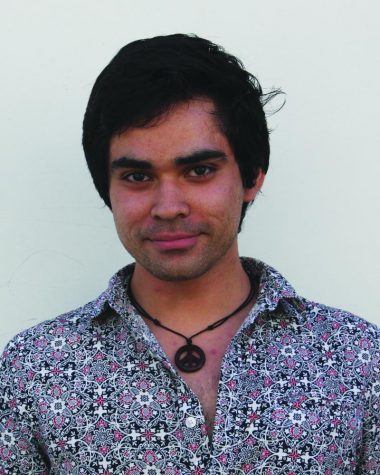Being proactive in engaging youth to explore otherwise hidden career opportunities is a concept that is important to people like President of Latina Public Service Academy Ana Cubas, Sabio CEO Liliana Monge but especially ListoAmerica Inc. founder Bill Izabal.
These three public figures and others are:
- Rene Bobadilla (City Manage, Pico Rivera)
- Fernando Vasquez (Mayor, City of Downey)
- Azusena Favela (Director of Programs and Operations, Leadership for Urban Renewal Network)
- Jorge Morales (Councilman, City of South gate)
- Brandon Phipps (Vice President, Kosmont companies
Were members of three panel discussions held as the main part of the Cerritos College Economic Development Summit put up on Friday, Sept 22.
Izabal gave his presentation on the operations of ListoAmerica that, according to its website (listoamerica.org), accelerates “youth readiness in Science, Technology, Engineering, Arts and Math (STEAM) for full engagement and success in the 21st century.”
During a fifteen minute break between panel discussions one and two, Izabal explained in more detail the development strategy and how it relates to the rest of the mission statement.
“We want to identify, inspire, engage and prepare youth for 21st century jobs — which are significantly STEM-based,” said Izabal.
He further explained that ListoAmerica Inc., like any business, went through three phases:
- “Survivability:” Izabal wanted to have a real program instead of investing money in presentation and then asking for money. He made the program “real” so that he could “show and tell, as opposed to just demonstrating in the chart.”
- “Sustainability:” According to Izabal, this means getting enough money to be able to look ahead two or three years, sustaining the program;
- “The cusp:” Which ListoAmerica is apparently not at yet, but includes scaling and growing the program to reach other communities.
According to Izabal, not having a curriculum (as ListoAmerica doesn’t have a curriculum) is irregular but effective.
“[Participants in the program] are facilitated by mentors and staff but they get to do what they want to do,” Izabal gushed, continuing, “When you walk into a 24-Hour Fitness, they don’t tell you ‘you have to use that machine or that machine, we have ten different kinds of machines.'”
Participants start with one kind of technology, according to Izabal, and it’s an organic piquing of interest in others (3-D printing in order to have hard copies of designs, for example).
According to research done by the Massachusetts Institute of Technology, this kind of structure (or lack-thereof) works.
“We found MIT,” Izabal began, admitting that he “looked at maybe 25 after-school programs, always asking the little probing questions; but it was MIT that had the quality research based on it.”
He and others went to Boston and talked to the “MIT people,” and has met with them once a year since then.
Izabal said that MIT provides the latest research; adding, “We are working with the latest approaches on how to motivate-we use the term “ignite”- kids in STEM and how they can get involved.”
The founder of ListoAmerica Inc. said that based on this research, the program will continue to be more “project-based;” citing a “high-tech pinata” that talks, says “ouch” when it is hit and moves on its own as a success of this system.
On the same panel was Mayor of the City of Downey Fernando Vasquez who expressed a need for more exposure for hidden opportunities within healthcare and STEAM.
After his presentation, Vasquez said that it is important that “we show the other side of these careers to these young, bright minds.”
Vasquez concluded that there are “many other industries that are vast and growing” within the healthcare industry that aren’t necessarily “being a doctor or a surgeon,” that give a lot of autonomy to work remotely.
This statement was in reference to Latina Public Service Academy President Ana Cubas answering Dr. Fierro’s question, “What are you doing to accommodate the new needs of the workforce?”
Cubas suggested that the needs of the new workforce are no different than those of previous generations, other than how millennials value autonomy and flexibility.
All this is in light of students like nursing major Erick Cortez appearing in-front of the Board of Trustees to give a summary of his experience in the Cerritos Complete program on Wednesday, Sept. 20.
According to Educational Partnerships and Programs director Colleen McKinley, Cerritos Complete started as a bridge program, meaning that there was no scholarship attached to it.
“That’s when the department was born and it’s become Cerritos Complete,” explained McKinley, noting that it has coordinated with a “variety of departments on campus” such as Admissions and Records, DSPS and Public Affairs to name a few.
The program focuses on students’ pledges to complete the degrees and certificates on time.
Cortez, who says that he didn’t have the grades to get into a four-year college but still wanted to get an education, remembered that school officials came to Warren High School (Cotez’ Alma Mater), to introduce the program.
“My experience was really awesome,” Cortez beamed, commenting, “They really care about you […] they want you to be successful.”
This echos career and academic counselor Clara Ross Jones’ words; who, in-part, is responsible for implementing and organizing the “high-touch” and “high-risk intervention strategies.”
This includes in-person orientations, intensive individualized reviews of high school transcripts and organizing the Summer Connections course (COUN 101A) which covers educational plans on how to put together a schedule.
Ross called it an “orientation and a success in college course.”
McKinley concluded the discussion period for the institutional reports by saying that she thinks Cerritos Complete has a bright future, going-off the testimonials of the students.
She continued that the department is seeing “some amazing kids come into our school;” adding that there are things to be evolved as the program grows, such as the program’s ability to withstand a projected 25% increase in students.









